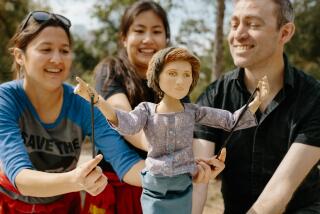The Google doodle: A highly creative home page homage
Photographer Robert Doisneau is known for Parisian street scenes that reflected his fascination with what he called “the marvels of daily life.” Four of his images — including his famous (if posed) 1950 picture of a kissing couple — graced last weekend’s Google doodle, the variation on its home-page logo with which the company celebrates special dates, people and events.
The April 14 tribute, which marked what would have been Doisneau’s 100th birthday, is one of many doodles devoted to the arts, presented with a style and skill that have made doodling an art in itself. “We see the home-page as a canvas not just for visuals but any kind of Web technology,” says Ryan Germick, head of Google’s doodle team and creator of the photo homage.
More than a thousand doodles have appeared — usually for a day — either globally or only in certain countries. Most live on in an archive (https://www.google.com/doodles) that serves as a virtual museum. Germick says the doodle was born in 1998, when Google founders Larry Page and Sergey Brin inserted a stick figure behind the logo as an “out-of-office message” while attending the Burning Man festival in Nevada. In 2000, Dennis Hwang was named the first chief doodler. Currently, about half a dozen illustrators — working with engineers — produce doodles at the company headquarters in Mountain View.
Over the years, the once-simple logo changes have grown more sophisticated — and visible. In June, Time called the doodle Google’s “most engaging innovation and its most effective advertising tool.”
Among recent highlights: a playable Pac-Man game in 2010 and, last year, a Jules Verne underwater adventure, a doodlers’ version of a Charlie Chaplin silent movie and a Les Paul-inspired electric guitar that enabled users to perform, record and share music. (Forty million songs were recorded in the U.S. in 48 hours, Google says.)
Doodles can take months to prepare and require high- (or low-) tech expertise. (One doodler painted a still life to salute Paul Cézanne in 2011.)
Most ideas come from within, says Germick, however the public can send suggestions to proposals@google.com. The word “Google” must appear in each creation, he adds, “although we take liberties.” The main goals? “Have fun and connect with users. Plus, we try to one-up ourselves.”
More to Read
The biggest entertainment stories
Get our big stories about Hollywood, film, television, music, arts, culture and more right in your inbox as soon as they publish.
You may occasionally receive promotional content from the Los Angeles Times.






